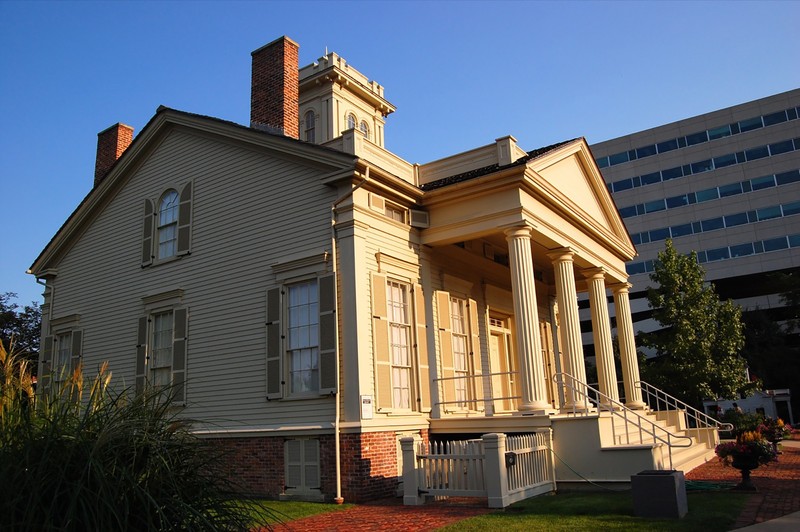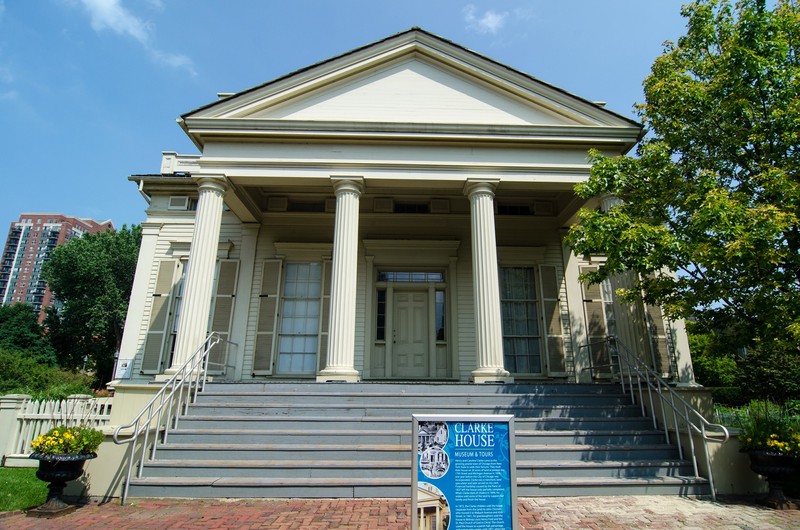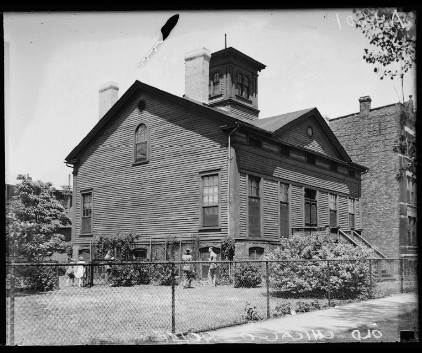Henry B. Clarke House and Museum
Introduction
Text-to-speech Audio
Images
Eric Allix Rogers, via Chicago Architecture Foundation

Eric Allix Rogers, via Chicago Architecture Foundation

As it appeared in 1934: Source: http://www.encyclopedia.chicagohistory.org/pages/3008.html

Backstory and Context
Text-to-speech Audio
Migrants and some immigrants began to populate what is now Chicago by the 1820s and 1830s, leading to Chicago's incorporation in 1837, which is also indicative growing rapidly in population and size and intent on settling the West. One of Chicago's new residents, who gambled on Chicago's potential, was Henry Brown Clarke, who moved his family from Utica, New York, to the the Chicago-Fort Dearborn area in 1835. Clarke enjoyed success selling hardware and building supplies, a booming business for a city enjoying a population increase. The success allowed him to build his home near 16th St and Michigan Ave in 1836 on the south end of the city, which at the time consisted of nothing but open land. Today, it's the concrete-and-steel haven known as the South Loop.
Many in the nation, in the midst of settling the frontier and removing Native Americans in the process, continued to champion Roman and Greek ideals as symbols of democracy as demonstrated by its architecture. Clarke’s house personified that trend with its ancient Greek style. The Clarke house enjoyed elements of a Greek temple including a grand staircase entrance and substantial columnns. As well, the house had a substantial timber that provided it durability, which in part, allowed it to survive to this day.
Henry Clarke died in 1849 and his widow, Caroline, sold off much of the house’s surrounding land to support their family, though work on the house continued. Decades later, after Chicago's Great Fire in 1871, the Clarke house was purchased and, as was common in the day, moved several miles to the south to 45th Street and Wabash, where it remained for more than a century. The house, in its new location, served as both a residence and part Bishop Henry Ford’s church.
When the church no longer needed the house, the City of Chicago sought to claim the building and keep it secure. The plan to move it again was delayed by a small fire and a harsh Chicago winter in 1977. Nonetheless, the move did eventually take place, moving it to its current location in Chicago Women’s Park. Efforts to restore the building have allowed the house to take on its original appearance, which can be enjoyed by visitors; the building now exists as a museum where Chicagoans and tourists can gaze into Chicago's early history.
Sources
Cronon, William. Nature's metropolis: Chicago and the Great West. New York: W.W. Norton, 1991.
Hietala, Thomas R. Manifest Design: American Exceptionalism & Empire. Ithaca: Cornell University Press, 1985.
Hine, Robert V. and John Mack Faragher. Frontiers: A Short History of the American West. New Haven: Yale University Press, 2007.
